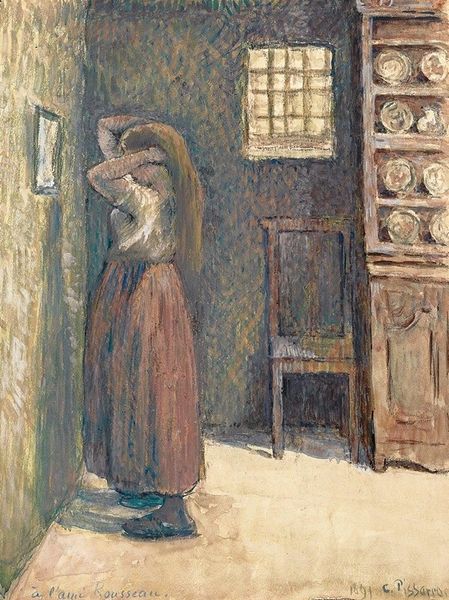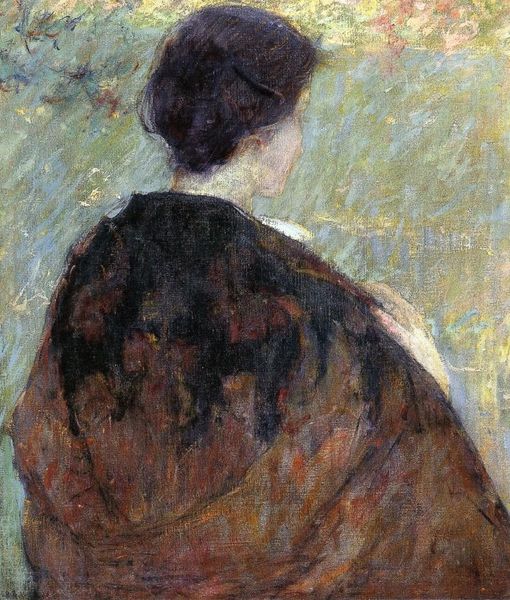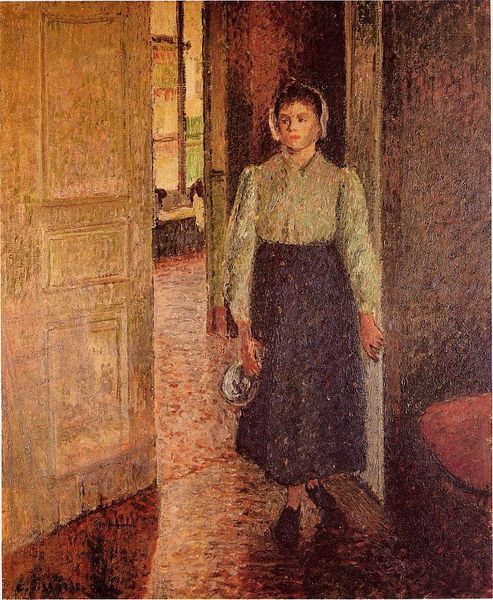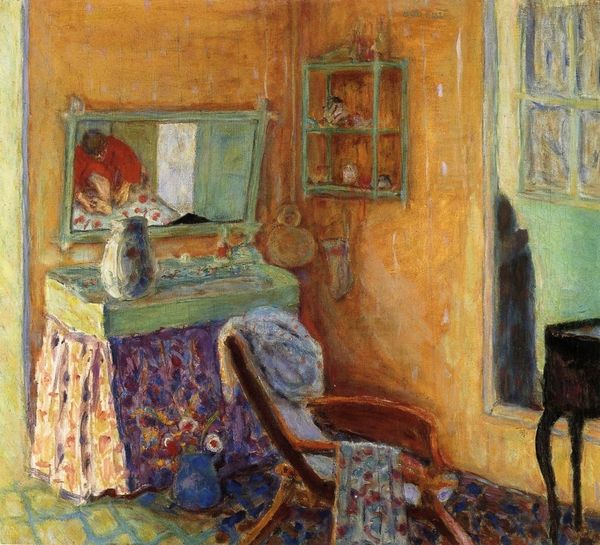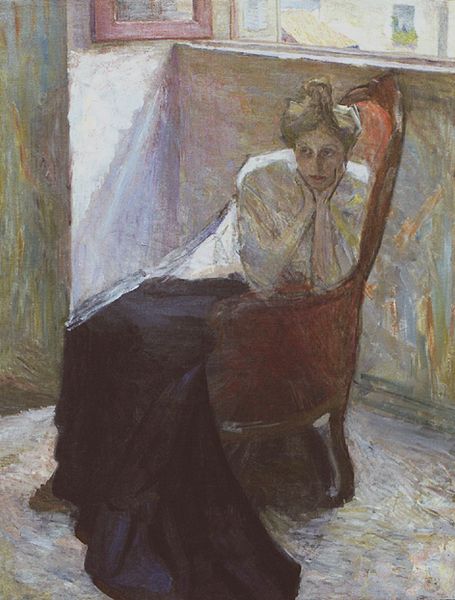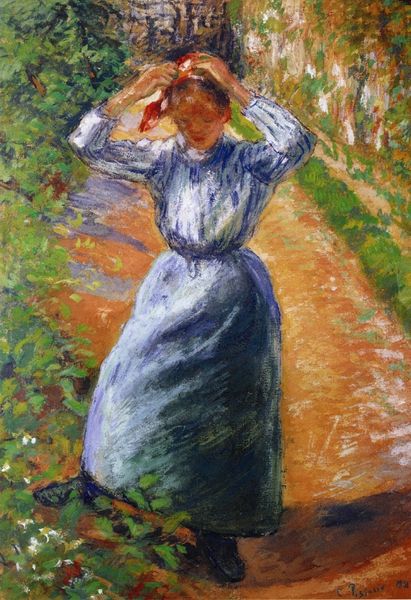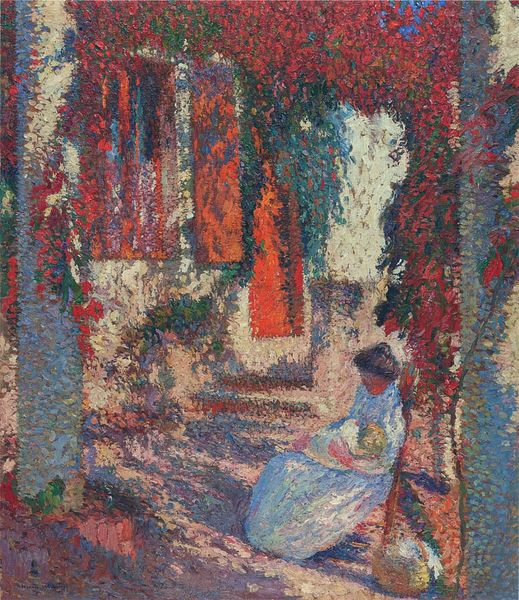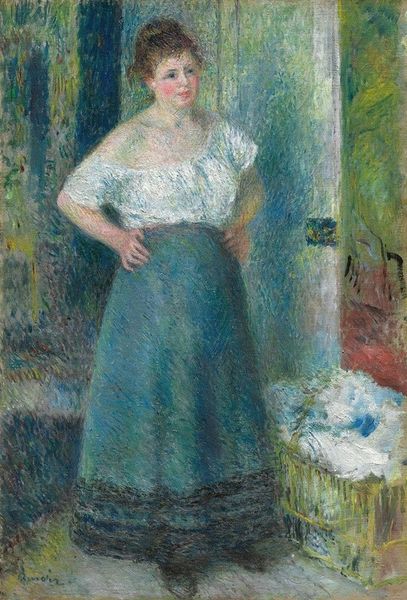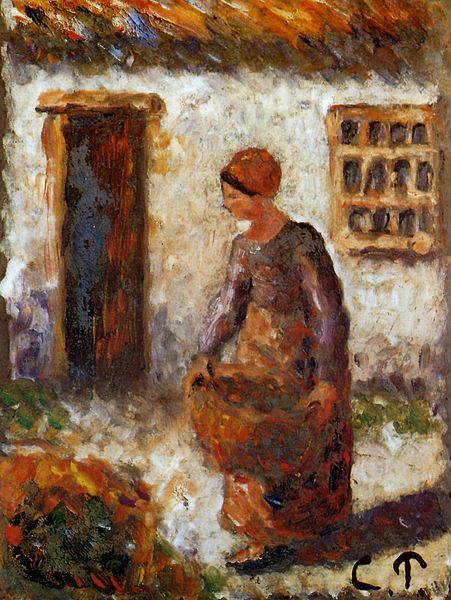
painting, oil-paint
#
portrait
#
painting
#
impressionism
#
oil-paint
#
impressionist landscape
#
figuration
#
possibly oil pastel
#
oil painting
#
france
#
genre-painting
#
post-impressionism
#
expressionist
#
realism
Copyright: Public domain
Curator: Camille Pissarro's “Young Peasant at Her Toilette,” painted in 1888, offers a glimpse into the everyday life of rural France. The oil on canvas depicts a woman, presumably a young farm worker, attending to her hair in what seems to be a humble interior. Editor: It strikes me as a very intimate scene, but rendered with this detached, almost clinical application of paint. The texture is so vibrant and alive, yet the subject's face remains hidden. It feels like we are being invited into the space, yet kept at a distance. Curator: That tension you describe speaks to Pissarro’s evolving relationship with Impressionism. By this time, he was experimenting with pointillism, a technique evident here in the myriad small dots of color that make up the scene. Considering this was created in France, what underlying issues and assumptions were driving this representation of peasantry? Editor: The scene certainly embodies an era deeply marked by the aftermath of the Franco-Prussian war. Perhaps this artwork engages with idealized notions of rural labor. Peasant women often had little agency over their lives; and this art captures how women’s identities were constructed through labor. What can you tell me about the woman's domestic sphere depicted here? Curator: The simple setting, with its bare walls and rudimentary furnishings, underscores her humble existence, yet also a certain dignity in her private ritual. One might note the positioning of the small window allowing for light into the enclosure of a home, representing her potential connections to an outside world and perhaps future social opportunity. Editor: Looking at it, I consider what's not shown. There is little indication of the labor required for survival. The impressionistic style softens any explicit commentary and provides viewers with a beautified tableau, allowing viewers to separate their admiration for visual expression from sociopolitical context. Curator: It reminds us that Impressionism and Post-Impressionism weren't simply about aesthetics. They engaged, often subtly, with the social fabric of their time. In today's museum climate, considering the gaze under which certain subjects were displayed throughout history provides visitors with vital intersectional analysis. Editor: It highlights the importance of scrutinizing even seemingly benign portrayals of labor, class, and identity. This artwork provides us the capacity to consider the implications of historical narrative when interpreting artistic endeavors.
Comments
No comments
Be the first to comment and join the conversation on the ultimate creative platform.
